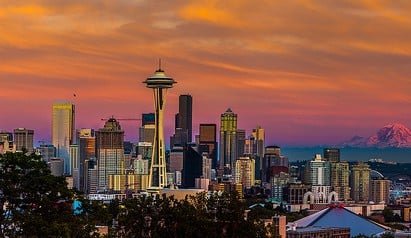
Photo: Howard Ignatius, via Flickr.

Eileen Kinsella

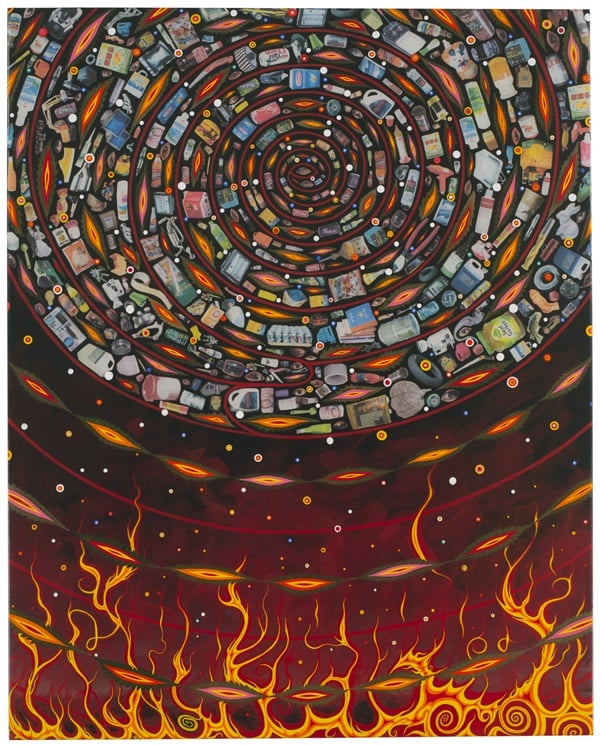
Fred Tomaselli, After Oct. 16, 2010 (2014).
Image: Courtesy of James Cohan Gallery.
Amid the seemingly endless schedule of international art fairs that take place around the world each year, all art world eyes will be on Seattle this week, where the inaugural Seattle Art Fair opens on Thursday July 30 and runs through August 2.
Previous attempts at organizing fairs here have never really gotten off the ground for a range of reasons, including being underfunded, poorly organized, or simply too regionally focused. One former committee member told us about previous show organizers being so hampered by underfunding that they were “always coming to us and encouraging us to accept a particular exhibitor just so they could pay the rent. But why would we do that?”
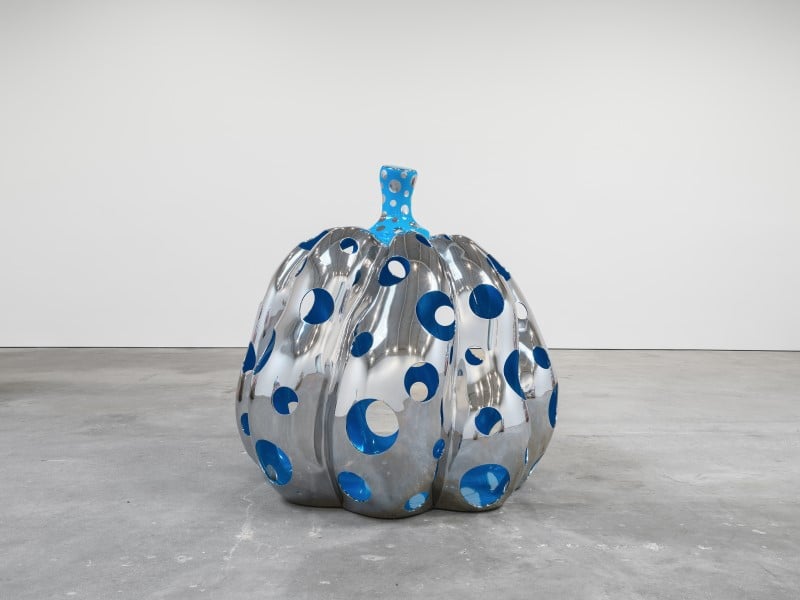
Yayoi Kusama, PUMPKIN (2015).
Image © Yayoi Kusama. Courtesy of KUSAMA Enterprise and David Zwirner Gallery.
Given the involvement of influential tech billionaire and collector Paul Allen, that aspect has already dissipated. The new Seattle fair is his brainchild, and his name has clearly inspired confidence in sponsors, organizers, and exhibitors alike—Gagosian, Pace, and David Zwirner are on board. So will Seattle finally fill the art fair void and get the high-caliber event it deserves? Here are the reasons why we say “Yes.”
1. Paul Allen and Vulcan, of course
“The guys at Vulcan had the initiative to pull this fair together,” New York dealer James Cohan, who is participating in this year’s edition, told artnet News, “and many of us do business with Vulcan and Paul Allen.” Cohan said that he initially agreed to do the fair as “kind of a favor to him.” “But now,” he said, “it’s certainly grown into the reality that there is a significant collecting population in the Northwest…. We’re ready to rock.”
“I think because Paul is involved in this—both instigating it the idea and co-sponsoring,” Seattle dealer Greg Kucera told artnet News, “it’s really poised to do something much better than anything else that Seattle has seen and I think the city is really ready for it now.”
2. The right mix of exhibitors
Cohan, along with fellow powerhouse dealers David Zwirner, Gagosian, and Pace, have all signed on, which is obviously a major vote of confidence. But the fair also has a healthy sampling of local dealers, including longtime gallery owner Kucera and a dozen other Seattle galleries. “Seattle has some very good artists whose work has not been exposed to the art fair circuit,” said Kucera.
“On a personal level I definitely welcomed the excuse to return,” Los Angeles gallerist Charlie James told artnet News. James lived in Seattle for five years beginning in 2003. “I think having a world-class fair in Seattle makes a ton of sense—this has to be one of the fullest-employed and most prosperous cities in America, as well as being a city that values creativity and has a history of important cultural contribution.” Asked what he’ll be bringing, James said, “Lots of folks are going to be thinking digital stuff, and maybe that’s okay, but I remember Seattle as a literary town. Everyone up here likes to pun—I’m not kidding—it’s a citywide thing for some reason. Playfully subversive stuff I think will go over here. And playfully subversive stuff is what I do.” On a side note, James also remarked that the city is “a real permissive place” with the Seattle Art Museum being nearby a peep show place called the Lusty Lady, “legendary for having the funniest phrases ever on the marquee.”
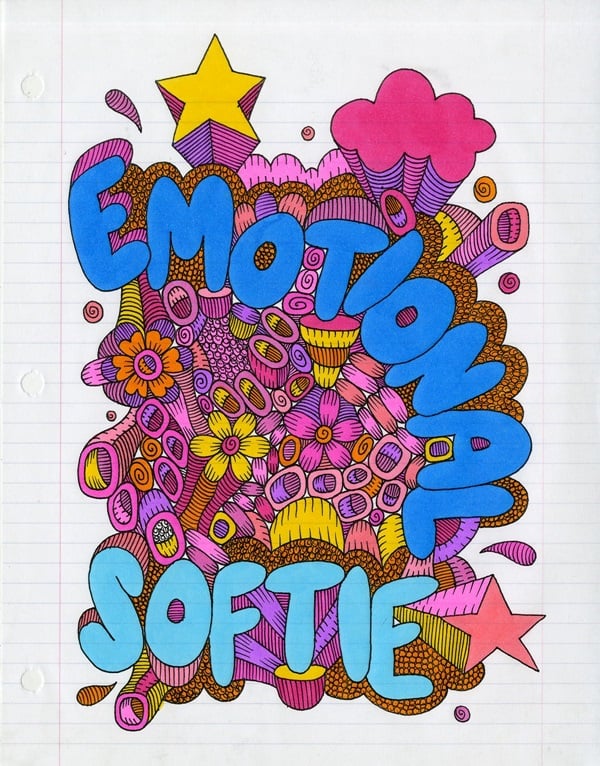
Michelle Andrade, Emotional Softie (2015).
Image: Courtesy of the Artist and Charlie James Gallery, Los Angeles.
3. Wealthy established collectors
“We have a nucleus of collectors in Seattle, so our goals are two-pronged,” Paul Kasmin Gallery director Eric Gleason told artnet News. “We want to reconnect and check in on those relationships while also building relationships with new collectors.”
4. Younger, newly minted collectors
The young entrepreneur “understands and appreciates what we are doing,” said Cohan. “They value the energy behind new ideas. Like all other collectors, they have aspirations of being part of the cultural dialogue and that’s exciting for them.” He added, “The best way to develop new clients is to be in direct physical contact with works of art and potential clients.”
Gleason noted that Seattle isn’t just filthy with tech industry folk, but it also has a sizable entertainment industry. As a result, Gleason said they are planning for more “unpredictability” for the visiting crowd in Seattle than they would, for instance, for Silicon Valley.
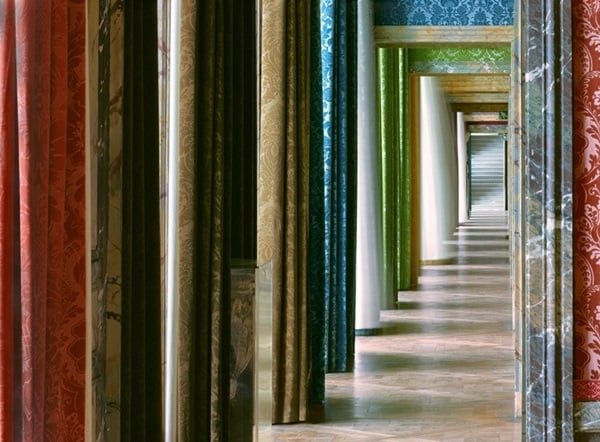
Robert Polidori , Enfilade #2, Salles du XVII, Aille du Nord- 1er étage, Château de Versailles, Versailles, France (2010)
Image: Courtesy of the Artist and Paul Kasmin Gallery
5. Lower risk of “fair-tigue” for visitors
Unlike behemoth fairs like the Armory Show (195 exhibitors), where your eyes, ears, and feet can quickly feel exhausted after seeing the first few aisles, the Seattle Fair, with just over 60 exhibitors, is much more manageable. This means less chance of so-called fairtigue and greater opportunity to engage with individual exhibitors. “Nothing makes an art dealer happier than having somebody ask a question,” said Kucera. “We’re very good about helping people and trying to educate and spread knowledge.”
Some dealers are also carefully curating their selections. Cohan says the gallery is bringing fewer artists “in order to isolate and focus the would-be collectors’ attention on several figures in our gallery that we think are worthy of their attention.” He explained the choices as follows: “Spencer Finch, who blends science and poetry into his light installations; Fred Tomaselli who hybridizes high and low cultural references; and Bill Viola, whose use of new media speaks to a broad spectrum of viewers.”
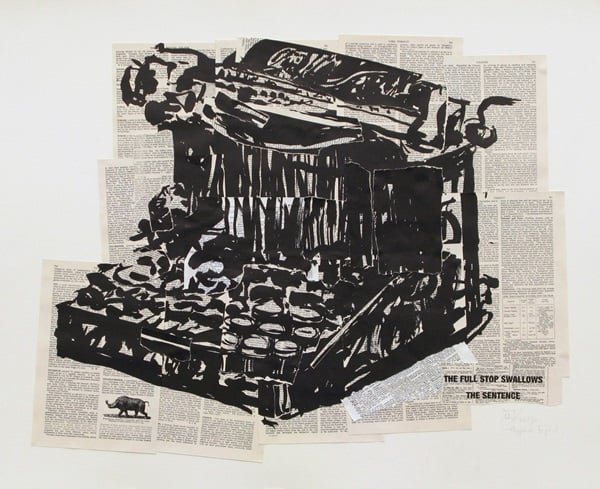
William Kentridge, The Full Stop Swallows The Sentence (2012)
Hand-printed lithograph with collage
(Edition of 35).
Image: Courtesy of Greg Kucera Gallery, Seattle.
6. Art Market’s leadership and Seattle’s commitment
Art Market, whose managing partner, Max Fishko, is serving as director of the Seattle fair, has developed a stellar reputation as a fair organizer. The company runs Art Market San Francisco, Art on Paper (New York and Miami), Texas Contemporary, and Miami Project. “While we are proud to be building an art fair for Seattle,” said Fishko, “we are also thrilled to steward a city-wide activation of the visual arts that will have its own life and point of view. Working with the Curatorial Committee, we’re going to break through the boundaries of the traditional art fair to really ignite the imagination of the city and the global arts community.”
7. It’s the gateway fair to collectors in Asia
While the Seattle Art Fair is the only art fair west of Chicago and north of San Francisco or Aspen, noted Kucera, the city serves as an important gateway to Asian dealers and collectors as well.
Related stories:
10 Tips For Newly Minted Tech Millionaires
Why Are Gagosian, Pace, and Zwirner Signing On For The Seattle Art Fair?
Curator Ben Heywood Named Director of Tech Billionaire Paul Allen’s New Culture Project
Microsoft CoFounder Paul Allen Launches New Art Fair in Seattle